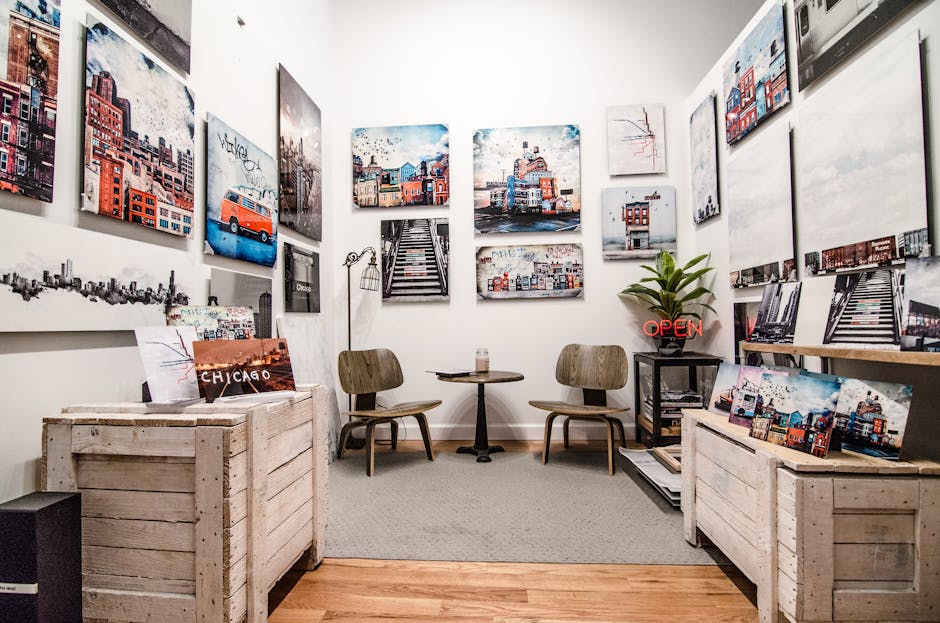Table of Contents
Picture this: you’re walking past your favorite coffee spot, and bam! A special offer for just their oat milk latte pops up on your phone. Not some generic ad, but one that feels like it knows you’re right there. That’s not magic, or some sci-fi movie stuff anymore, especially not here in 2025. That’s geofencing display ads doing their thing, and honestly, they’re way more interesting than a lot of folks probably give ’em credit for.
For ages, advertising just kind of threw messages out there, hoping something would stick. Like, sending flyers to everyone in a whole town when only a few people actually need what you’re selling. That’s kinda wasteful, right? But with geofencing, it’s like having a super-smart homing beacon for your ads. You draw a digital fence around a specific area – a store, a concert venue, even a competitor’s parking lot – and only people who physically step into that zone see your ad. Pretty neat, if you ask me.
And here in 2025, it’s not just about drawing a circle on a map and hoping for the best. It’s gotten way smarter. We’re talking about targeting folks based on where they really are, right then, or where they’ve been hanging out. It’s about making ads that feel relevant, not just annoying. What’s interesting is how much the tech has improved, making this whole thing super precise and, frankly, a bit more human.
What’s the Big Deal with Geofencing Display Ads Anyway?
Think of it like this: if you own a shoe shop, you don’t wanna show ads for fancy dress shoes to someone who’s already bought a pair last week and is now looking for sneakers. With geofencing, you can be way more specific. You set up these digital boundaries, which are called geofences, around places where your potential customers are. Say, a mall. When someone walks into that mall, their phone’s location data (which, yeah, they’ve usually agreed to share, you know, when they download apps) pings, and boom – they’re now in your targeted zone. So, your ad for those cool new running shoes pops up on their phone while they’re browsing an apparel store. That’s pretty cool, right? It makes the ad feel less like a random shout and more like a helpful suggestion.
It’s not just about drawing a big circle, either. Nowadays, you can get super granular. We’re talking polygons that wrap around a specific building, or even multiple floors within a shopping center. It gets really detailed, meaning your ads are shown to people when they’re in the exact spot where that ad might make the most sense. This means less wasted ad spend and more eyes on stuff people actually might want.
Why Are People Still Talking About This in 2025? It’s Not New, Right?
You’re right, the idea of geofencing isn’t fresh out of the box. It’s been around for a bit. But like a lot of tech, it’s been evolving. Back in the day, it was a bit clunky, sometimes inaccurate. Now? It’s smoother, way more accurate, and it plays nicer with all sorts of other marketing tools.
One big reason it’s still a hot topic is because our lives are so tied to our phones, and our phones know where we are, pretty much all the time. Also, people are just used to seeing ads. But they’re also pretty good at ignoring the bad ones. Geofencing, when done right, cuts through that noise because it’s timely and relevant. It’s not just about showing an ad; it’s about showing the right ad at the right moment. I believe that’s why businesses, big and small, are still super into it. It’s a smart move in a crowded digital space.
And it’s not just for big box stores. Think about a local restaurant trying to get folks in during lunchtime. They can set up a geofence around office buildings nearby and push out a daily lunch special ad. Or a concert promoter could target people hanging out near a stadium a week before a big show, getting them excited about tickets. It’s got so many possibilities.
How Does This Stuff Actually Work Without Being Creepy?
Okay, so how does it work without feeling like Big Brother is watching you? Basically, it relies on anonymous location data from mobile apps. When you download a free game or a weather app, sometimes you agree to let it access your location. This data gets collected, anonymized (meaning it’s not linked directly to your name, just a device ID), and then aggregated. Advertising platforms use this aggregated data.
So, when a business sets up a geofence, the system basically checks if any of those anonymous device IDs have crossed into the defined area. If they have, and they’re on apps that display ads, then your ad gets served up. It’s not like they know you, specifically, are Jane Doe walking down Main Street. They just know a device that fits the criteria is there, and they serve an ad to that device.
Privacy is a big thing now, even bigger than a few years ago. So, the tech companies and advertisers are really pushing for transparency and making sure users have control over their location sharing settings. Most folks know that if they want free apps or personalized experiences, some data sharing is part of the deal. The key is making sure it’s done ethically and clearly. And honestly, for most users, getting an ad for something they actually might want right when they need it feels less intrusive than just getting spammed with random stuff.
Real-World Scenarios Where Geofencing Just Makes Sense
Let’s get real. Where do you actually see this stuff popping up?
Retail: Imagine a small boutique. They could set a geofence around their store and their two closest competitors. When someone hangs out at the competitor’s place for a bit, that boutique’s ad for a “20% off your first purchase” pops up. Talk about stealing some thunder! Or, if someone visited your store last week but didn’t buy anything, you could target them again when they’re back in the area with a reminder or a special offer. That’s pretty smart, right?
Events: Music festivals, trade shows, local fairs. Event organizers can geofence the venue a few days before and during the event. This means attendees get real-time updates, special vendor offers, or even reminders about specific acts. After the event, you can retarget attendees with info about next year’s tickets.
Automotive: Car dealerships could geofence their lot and even competitor lots. Someone test-drives a car at the dealership down the street? Your ad for a similar model, maybe with a better financing deal, could pop up on their phone later that day. It’s like a gentle nudge.
Restaurants & Bars: Super simple, super effective. Geofence around your place, maybe a few blocks, and push out lunch specials or happy hour deals when people are out and about looking for a place to eat or drink. It makes finding a good spot easier for the consumer.
Tourism: Hotels or attractions can geofence train stations, airports, or other tourist hotspots. As visitors arrive, they start seeing ads for places to stay or things to do.
What’s interesting is how businesses aren’t just using it to grab new customers. They’re also using it to connect with existing ones. For example, a sports arena might geofence itself and send season ticket holders exclusive content or merchandise discounts when they’re at a game. It builds loyalty, you know?
Challenges and Stuff to Watch Out For
Now, it’s not all sunshine and rainbows. There are a few things to keep in mind if you’re thinking about using geofencing display ads.
Accuracy: While it’s way better than it used to be, GPS isn’t always perfect, especially indoors or in really dense urban areas. So, sometimes, an ad might get served a block away, or not at all. It’s usually good enough for most purposes, but not flawless.
Ad Fatigue: If someone gets pinged with an ad every time they walk into a certain area, they’ll get annoyed pretty fast. Businesses have to be smart about frequency capping – meaning, don’t show the same person the same ad 50 times in an hour. That just makes people hate you.
Privacy Concerns (Still): Even with anonymized data, some people are just not comfortable with location tracking. Companies have to be transparent and let users opt out easily. If not, it can backfire big time. It’s about building trust, basically.
Strategy: You can’t just draw a random circle and expect magic. You need a good plan. Who are you trying to reach? What message makes sense for them right there? What do you want them to do? Without a clear strategy, it’s just another wasted ad dollar.
And, you gotta remember, a good ad still needs to be, well, good. A super targeted ad for a crummy product or service isn’t gonna do much. It’s just a tool, like any other.
FAQs About Geofencing Display Ads
How accurate is geofencing in 2025?
Honestly, it’s pretty solid now, way better than it used to be. Most of the time, we’re talking within a few meters, especially outdoors where GPS signals are strong. Indoors can be trickier, but with Wi-Fi and Bluetooth beacon tech helping out, it’s still pretty good in places like malls or large venues.
Is geofencing legal with all the privacy rules?
Yeah, mostly, but it’s super important to play by the rules. It works by using aggregated, anonymized data from apps, which generally falls within privacy regulations like GDPR or CCPA as long as users have given consent to share their location data. Transparency is key. Companies can’t just secretly track people; users need to knowingly opt-in, even if it’s buried in an app’s terms.
Can I target specific demographics with geofencing?
You can’t directly target “Sarah, 35, loves cats” just by her location. But you can combine geofencing with other data points. For example, you can target people who have visited certain places (like a pet store) and then entered your geofenced area. So, while it’s not direct demographic targeting, you can get pretty close by understanding behavior based on where people spend their time.
Is geofencing expensive for small businesses?
It used to be more of a big-budget thing, but now? Not so much. There are platforms out there that make it pretty affordable for smaller businesses to give it a whirl. You can set a budget, usually based on impressions or clicks, and start with a relatively small area. It’s definitely more accessible than it ever was.
What’s the difference between geofencing and geotargeting?
Okay, so it can get a little confusing, but here’s the simple way I think about it. Geofencing is about drawing a fence around a place and seeing who enters or exits that specific boundary. It’s more about real-time, immediate action based on a physical location. Geotargeting is broader; it’s about showing ads to people within a general geographic area, like a whole city or zip code, regardless of their movement. Geofencing is way more precise, basically.
So, What’s Next for This Stuff?
I reckon geofencing display ads are only gonna get smarter. We’ll probably see even more integration with AI, making the ad messages even more personalized based on someone’s past behavior and their current location. Imagine walking into a hardware store, and an ad pops up for exactly the type of drill you looked at online last week. That’s the kind of stuff that makes people go, “Whoa, that’s useful!”
There’s also talk about more hyper-specific targeting inside buildings using tiny beacons, which could be wild for indoor navigation and retail. Plus, as smart cities grow, geofencing could play a bigger role in public service announcements, traffic alerts, or even just helping people find parking.
It won’t replace all other advertising, obviously. But as people spend more time on their phones and expect more personalized experiences, geofencing is just going to keep getting more important. It’s a tool that really understands the “where” of marketing, and in 2025, knowing where your customers are and what they’re up to, that’s still a huge deal for pretty much any business trying to get ahead. It’s not just a passing trend; it’s sticking around, and it’s evolving, making advertising a little less like guesswork and a lot more like a super-smart conversation.












